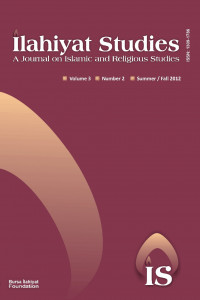Gnostic Apocalypse and Islam: Qur’an, Exegesis, Messianism, and the Literary Origins of the Babi Religion, by Todd Lawson
Abstract
The title, circumstantial and long-winded as it is, bears witness to a protracted process of maturity. The author addressed the topic in his PhD thesis (McGill Univ., 1987), and he has apportioned the material to a series of articles presented at a number of relevant conferences. He stands within a tradition: the origins of Bābism (and, in its wake, the Bahāʾī religion) attracted E. G. Browne’s interest when he spent “A Year amongst the Persians” in 1887-1888, and anglophone scholarship followed with works written by Hasan Balyuzi (1973), Denis MacEoin (1979, 1992, 2009), and Abbas Amanat (1989). The present book (140 pages of text with 34 pages of endnotes) addresses the philological hub of the problem, the Bāb’s Tafsīr sūrat Yūsuf, a strange product of religious Schwarmgeisterei that is anything but what it pretends to be, namely exegesis. Sūra 12 of the Qurʾān serves as a mere gimmick; the “commentary” rarely refers to the scriptural basis but accumulates a multitude of enigmatic allusions that must be decoded in the process of reception. Most of these statements conjure up the Qurʾān itself, but on the basis of a specific interpretation that could develop only in a late Iranian intellectual milieu after the spread of the Shaykhī movement. The Tafsīr itself was subdivided into 111 “sūras” of 42 verses each (because 42 is the numerical value of the word balā, the answer given by mankind to the famous a-last question in Q 7:172).
Keywords
Gnostic Apocalypse and Islam: Qur’an, Exegesis, Messianism, and the Literary Origins of the Babi Religion, by Todd Lawson
Abstract
First paragraph: The title, circumstantial and long-winded as it is, bears witness to a protracted process of maturity. The author addressed the topic in his PhD thesis (McGill Univ., 1987), and he has apportioned the material to a series of articles presented at a number of relevant conferences. He stands within a tradition: the origins of Bābism (and, in its wake, the Bahāʾī religion) attracted E. G. Browne’s interest when he spent “A Year amongst the Persians” in 1887-1888, and anglophone scholarship followed with works written by Hasan Balyuzi (1973), Denis MacEoin (1979, 1992, 2009), and Abbas Amanat (1989). The present book (140 pages of text with 34 pages of endnotes) addresses the philological hub of the problem, the Bāb’s Tafsīr sūrat Yūsuf, a strange product of religious Schwarmgeisterei that is anything but what it pretends to be, namely exegesis. Sūra 12 of the Qurʾān serves as a mere gimmick; the “commentary” rarely refers to the scriptural basis but accumulates a multitude of enigmatic allusions that must be decoded in the process of reception. Most of these statements conjure up the Qurʾān itself, but on the basis of a specific interpretation that could develop only in a late Iranian intellectual milieu after the spread of the Shaykhī movement. The Tafsīr itself was subdivided into 111 “sūras” of 42 verses each (because 42 is the numerical value of the word balā, the answer given by mankind to the famous a-last question in Q 7:172).
Details
| Primary Language | English |
|---|---|
| Subjects | Religious Studies |
| Journal Section | Book Reviews |
| Authors | |
| Publication Date | February 21, 2013 |
| Submission Date | July 31, 2012 |
| Published in Issue | Year 2012 Volume: 3 Issue: 2 |


